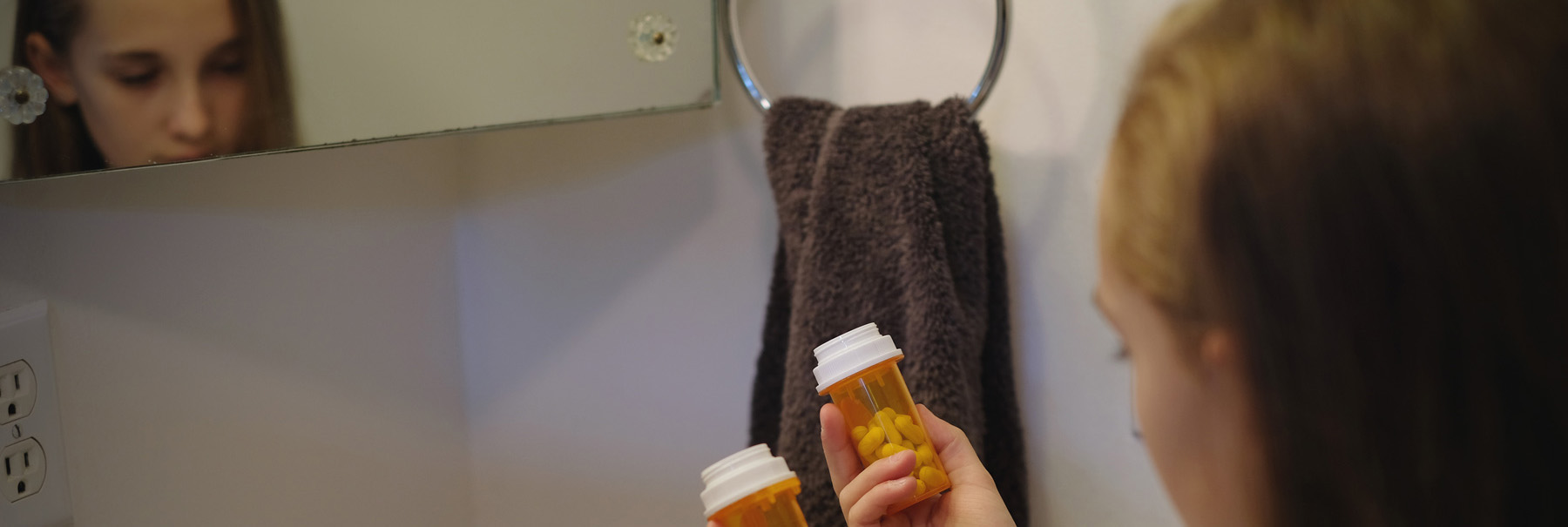Teens and Opioids – and the Medicine Cabinet

Opioid abuse is a national crisis affecting men and women of all ages, including teens. And the problem typically starts close to home.
In 2017, about 1.7 million people aged 12 and older had a pain reliever use-disorder. And while the percentage of teens abusing pain relievers has gone down dramatically between 2003 and 2018, there is still cause for concern.
In one study, nearly 104,000 adolescents, ages 12 to 17, told researchers that they had misused prescription medications. Because researchers relied on self-reporting, experts say the number of kids using prescription meds is likely higher. A second study tracked sources of prescription drugs across a group of 18,549 high school seniors. The prescription drugs most commonly abused were tranquilizers, stimulants, and opioids. Both studies found that prescription drugs were taken from family members, friends, and left-over prescriptions from previous conditions.
Almost 30 percent of the teens took left-over opioids from the family’s medicine cabinet.
“It’s been an ongoing problem ever since I’ve been a physician dating back to the early 80s,” says Dr. Robert Schwartz, chair of family medicine at the University of Miami Health System. “And the problem still exists. How do you manage to control young people in terms of making them aware of the dangers that these medications incur?”
It has to be a community responsibility.
If kids develop a relationship with their primary care provider, they have an opportunity to talk about things they don’t want to discuss with their parents, says Dr. Schwartz. Unless the child is a danger to themselves, everything they say is private.
“The assurance that I’m not going back to tell the parents helps,” said Dr. Schwartz. “Sometimes they open up about things, and then we can talk about the negative side effects and harm, and potential for addiction in other areas.”
The standard doctor visit lasts 15 to 20 minutes. That’s not enough time to solve the problem, he says. And while physicians have a responsibility to talk to their patients about the risks, the solution to the opioid epidemic has to come from parents, guardians, educators, primary care physicians, and mental health professionals.
Let’s face it: discussing certain topics with kids can be awkward.
But, with opioids and teens, in particular, getting out ahead of the problem is the best thing you can do for them.
“What I tell parents is to try not to have the discussion in a punitive fashion,” said Dr. Schwartz. “Talk about it as: this is a national problem, young people are dying. Adult professionals are having addiction problems.”
Don’t ask leading questions. “Rather, ‘do you know if any of your friends are using? Let’s talk about the risk of doing some of these things.’ It all depends on how you approach these things.”
Some adults are unwilling to have those discussions, he says. And that’s when it’s helpful to have someone else – a trusted friend or family member – who can have those conversations a little more easily.
Sometimes — even with regular communication— teens may still end up using opioids.
“If parents are not involved, then the prognosis for young people is not very good,” says Dr. Schwartz. “It has to be involvement in the right way. It can’t be a punishing type of perspective and attitude. It has to be a completely supportive approach. Then, there has to be a realization when you need professional help. There are a number of organizations that can help with detox. And usually, it’s a lifelong issue when teens become addicted at any early age.”
UHealth offers a program called Office Based Addiction Treatment, or OBAT, which manages opiate abuse as a chronic health condition. If you or someone you know is addicted to opioids, UHealth’s OBAT program is accepting new patients. For more information, call 305-243-8523.
Cara Tremols is a contributing writer for UMiami Health News.
Tags: Dr. E Robert Schwartz, opiods, teens
